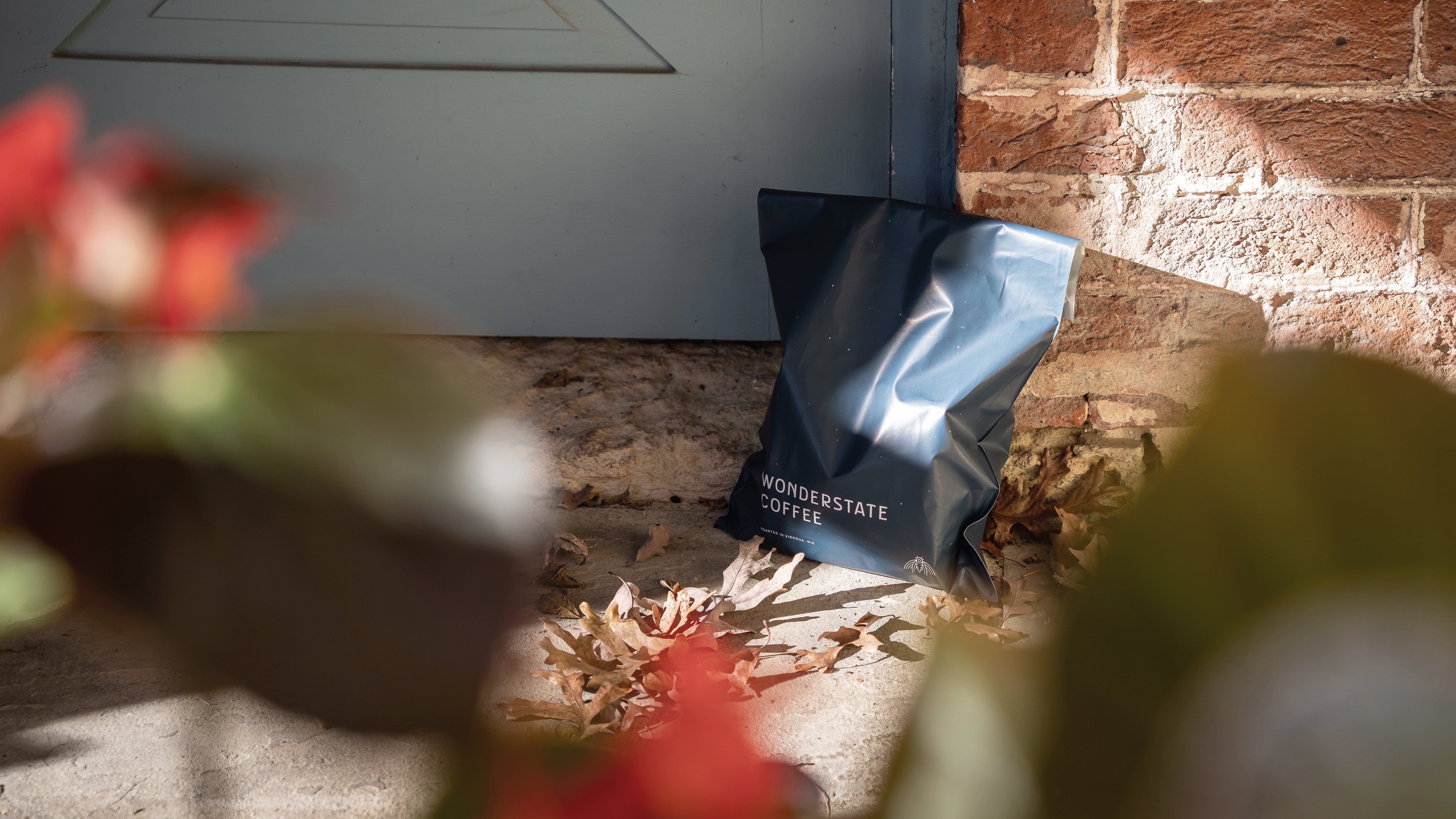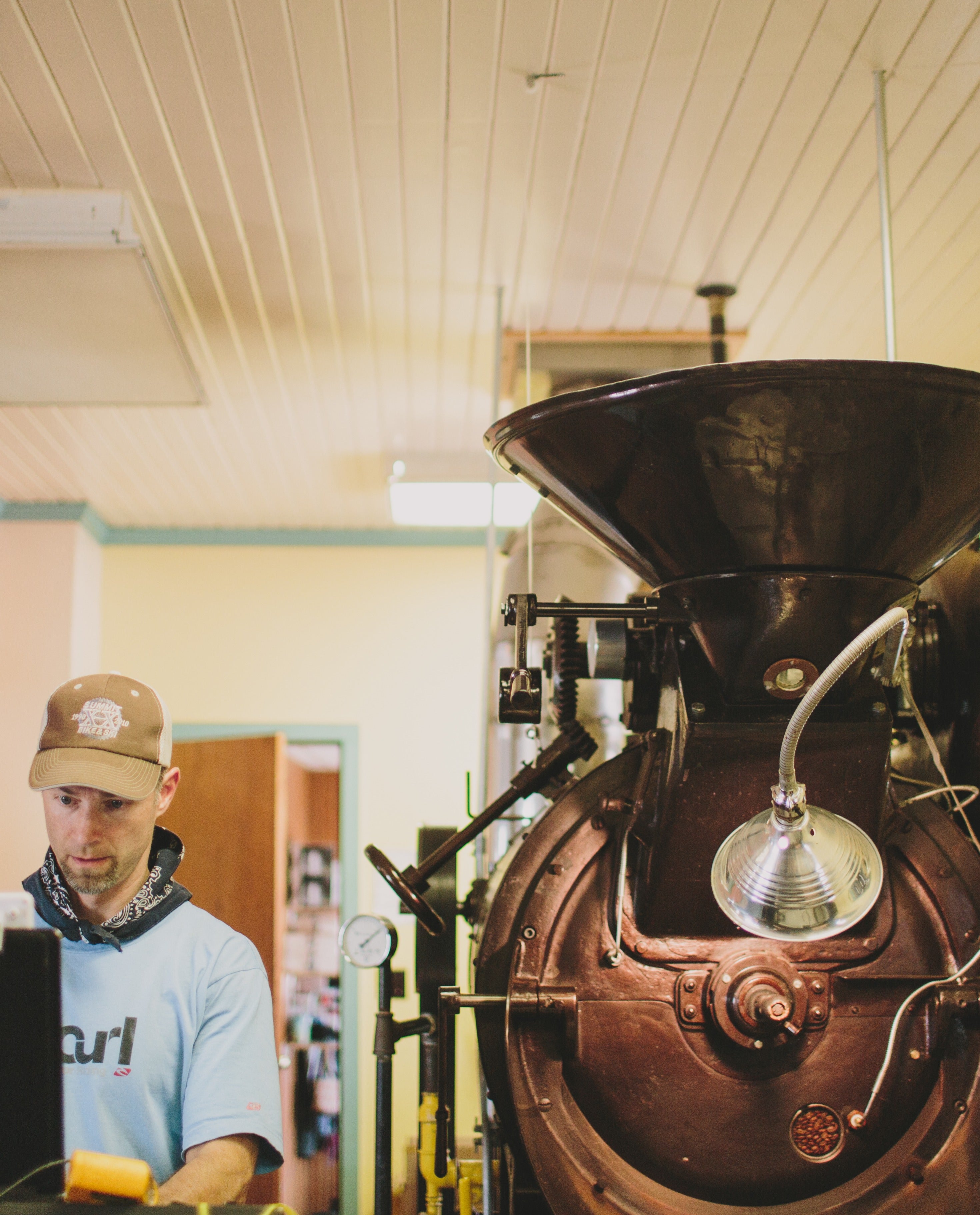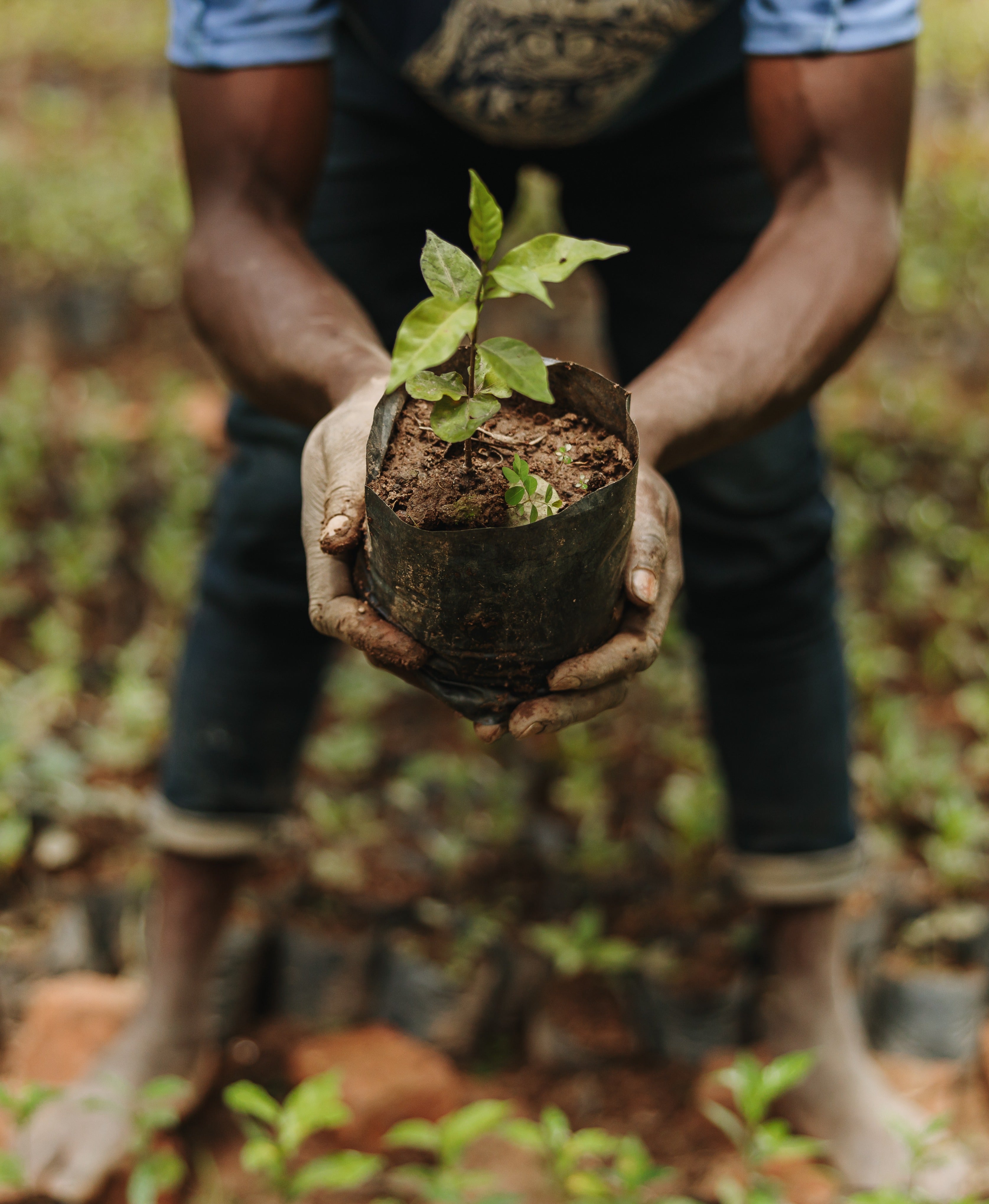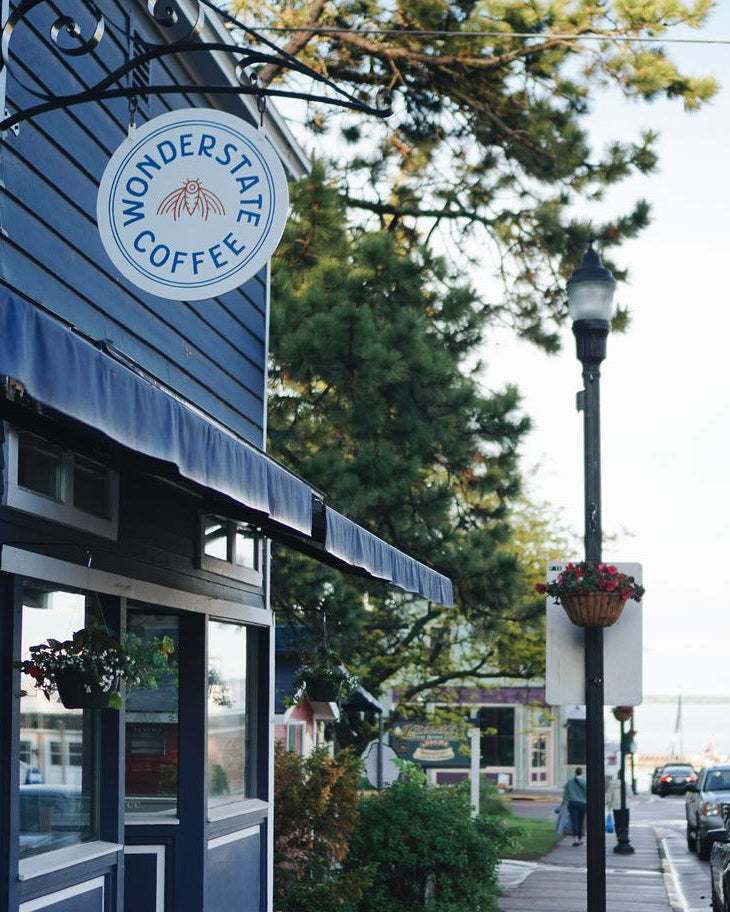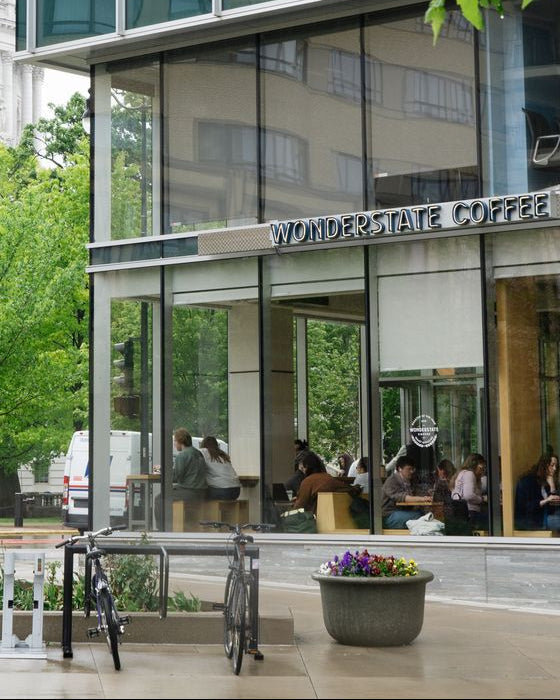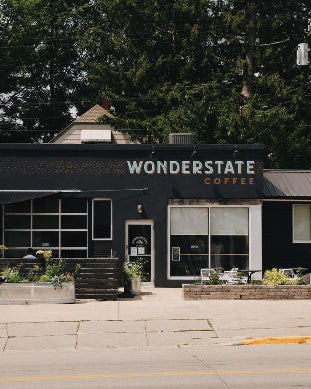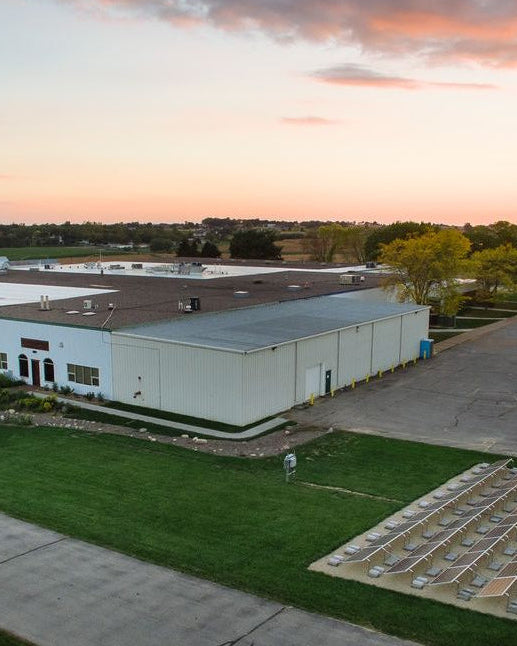Words by Shizue RocheAdachi
Photos by Bobbi Griffin
“I thought I was going to tour a coffee farm––see the plants, see how the beans are dried, how they’re processed,” Bobbi Griffin, lead at Kickapoo Coffee’s Viroqua cafe tells me. We’re sitting at the long wooden counter in the front of the cafe––a glass-fronted building exposed to small-town Viroqua’s Main Street. With the constant whirr of grinding beans at our back, Bobbi tugs at her scarf as she searches for the words to describe her recent trip to Chiapas, Mexico. Sponsored by Kickapoo Coffee as part of an ongoing effort to offer educational opportunities to partners and staff, Bobbi spent six days touring the area with On the Ground, a non-profit that organizes for equity in the coffee industry.
Bobbi (3rd from left), poses for a photo with her On the Ground trip companions
A lush highland state of pine forests and fertile rainforests, Chiapas is one of Mexico’s most prolific and internationally renowned coffee producing regions. “[At the coffee shop] we always say…it’s our duty to put forth that perfect cup, to pay homage to all that went into producing it. So I wanted to know more about the supply chain and feel it, be immersed in it. And that was why I went. It was just very much about the coffee.”
On Monday, Bobbi landed in San Cristóbal de las Casas, the cultural capital of Chiapas. On Tuesday, she was informed of a hostage situation. “I think that’s when I realized, it wasn’t going to just be about the coffee.”

Overlooking the forests and mountain ranges of Chiapas
The history of coffee production in Chiapas is entwined in a complicated and brutal struggle for land and political power. During the Zapatista movement of the 1990s, which sought to establish indigenous rights in the face of expanding globalized trade, Chiapas was marred by paramilitary conflict. Fearing perceived economic instability by international partners, the Mexican government encouraged paramilitary forces to seize lands farmed by indigenous communities and enforce government control by any means possible. Home to more than quarter of Mexico’s indigenous population, Chiapas was at the center of the struggle.
On December 22, 1997, a small paramilitary group descended into the mountain-side town of Acteal and shot and killed 45 innocent people. Massacred at in the town's church, the victims included 15 children and 21 women, five of whom were pregnant. The carnage was horrific. The statement was poignant––a direct attack on the life and future of indigenous communities. But the community, all of whom were members of the pacifist group, Las Abejas (“The Bees’) did not submit in the face of tragedy. At the mass funeral for the victims of the massacre, residents brought bricks––a tangible commitment to rebuild, to persist.

Left, a mural painted on the church’s walls commemorates those lost in the
Acteal massacre. Right, a mural symbolizing Las Abejas (“The Bees”).
Las Abejas did not abandon the site where they lost 45 of their own. They buried their dead, they built a pavilion, and then the Abejas turned to coffee. In 1999, Maya Vinic coffee cooperative was founded and became the organizing force fighting for the economic future of the Abejas community.
…
Acteal is hidden from the road. To reach it, you hike through the woods, the town––a collection of modest structures––emerging from the trees. “I had read about Acteal,” Bobbi tells me, "but actually being there…”
While the conflict in Chiapas no longer commands international news coverage, the struggle for sovereignty continues. Starved of government resources, indigenous communities must self-organize to survive, living under the constant threat of paramilitary action. The day after Bobbi landed in Chiapas to meet her travel companions and visit the Maya Vinic cooperative, the group learned several members of the Abejas community had been taken hostage. “They [the organizers] weren’t sure if it would be safe to visit the farm at all.”
The next morning, after word came from Acteal that the hostages had been released, the group made the 2 1/2 hour drive north to the remote village. “It was beautiful,” Bobbi tells me, “we drove up the side of this mountain and it was rocky and lush, and then we see these smoldering buildings.” Houses of Abejas, their driver told them, burned the day before by the paramilitary.
The church in Acteal, the site of the massacre, sits at the center of the small square, the pavilion at its side. “There were all these white flags scrawled with black magic marker that the women had made the day before, hung in the pavilion.” Bobbi pulls out her phone to show me a picture––a string of white flutters against the backdrop of mountains. “Freedom for Our Innocent Companions,” one flag reads.

White flags hung in the pavilion protest the wrongful capture of
Abejas community members and demand their release.
“It was weird to experience this heavy hearted side––seeing the church and the catacombs––and then to see the [just-released] hostages sitting on a ledge, laughing and just hanging out,” Bobbi shakes her head, “and we’re sitting there and being goofy with the kids that are living there––you know the kids are all showing off and saying ‘take pictures, take pictures.’” Bobbi shifts her weight on her stool. “I mean, can you imagine?" The mundanity of everyday life acted out in the same space that saw death, in the same place that sees a constant struggle to assert its right to exist. “And meanwhile all the coffee beans are just drying out on tarps in front of the church,” Bobbi muses, “that’s their livelihood right there and it’s just out on the ground––there’s chickens all around it, they’re washing their dishes right next to it.”
Coffee beans dry on tarps in front of the church in Acteal.
When Bobbi returned home after six days in Chiapas she said she had a hard time describing the experience. “I wanted a story but how do you share that?” She laughs, her eyes wet with fresh tears. The drying of coffee beans alongside history, alongside men cracking jokes in the revelry of life, alongside children playing––children born a decade after that December massacre. How do you tell the story of living as an act of resistance? How do you tell the story of the success of a farming cooperative as the success of a community to assert its right to survive?
The view to the outside from the catacombs.
“When we were first starting here [at the coffee shop], Caleb (Kickapoo Coffee’s co-founder) would often say, ‘we have things up there [on the menu], and they cost a certain amount…and it opens the conversation––you need to start the conversation about the coffee.’ And we were like, ‘people just want to know what it tastes like, they want to know how much it costs, and they just want to pick.’” But now, Bobbi tells me, “I get more what he was talking about.” Coffee is the what but, “there’s a huge story of why.”
Bobbi serves up coffee close to the source, in San Cristóbal.
But watch out if you want to get to the why, she warns me with a smile. “Do you really want to open the floodgates? ‘Cause I’m about to open them.”
Read more
by Luke Brekke Sometimes our best intentions lead us down some pretty crooked roads, especially in the world of coffee. Fortunately, when it comes to coffee, there's usually something special at th...
Catch up with us in Seattle at the Specialty Coffee Association's annual expo!

